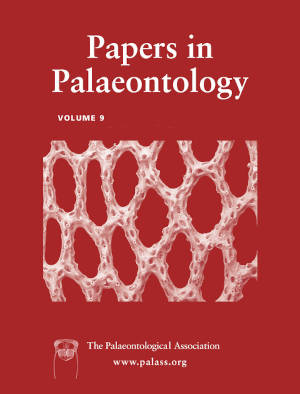Article: Phylogenetic position of Bohemiacinctus gen. nov. (Echinodermata, Cincta) from the Cambrian of Bohemia: implications for macroevolution and the role of taxon sampling in palaeobiological systematics
Publication: Papers in Palaeontology
Volume:
9
Part:
1
Publication Date:
2023
Article number:
e1482
Author(s):
Samuel Zamora, David F. Wright, and Martina Nohejlová
DOI:
10.1002/spp2.1482
Abstract
Abstract ‘Asturicystis’ havliceki Fatka \& Kordule from the middle Cambrian of Bohemia (Czech Republic) is re-described based on its type material. Several features, including the extension of the food grooves and presence of ventral swellings suggest that ‘A.’ havliceki does not belong to Asturicystis, and is placed in the new genus Bohemiacinctus. To ascertain the phylogenetic position of Bohemiacinctus havliceki, we conducted Bayesian fossil tip-dating and parsimony-based phylogenetic analyses of 24 species spanning all major groups of cinctan higher taxa. Results show a high degree of congruence between tree topologies recovered by both tip-dated and parsimony-based analyses. Both methods indicate B. havliceki is phylogenetically distant from Asturicystis and is most likely to be an early representative of the family Sucocystidae. Overall, our phylogeny is broadly similar to previous estimates of cinctan relationships, including a more conventional phylogenetic position of controversial taxa such as Protocinctus. These results point to the sensitivity of small clades such as cinctans to taxon sampling effects, and highlights the importance of taxonomy and accurate morphological character descriptions in phylogenetic analyses of fossil taxa.
